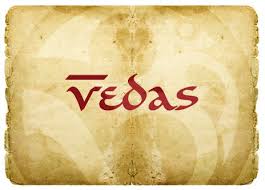Types of Vedas - NCERT Ancient History Notes

Types of Vedas - NCERT Ancient History Notes
The composition of these religious texts reflects Vedic Sanskrit originating from ancient India. These four Vedas are called Rigveda, Yajurveda, Samaveda and Atharvaveda (Atharveda). These books are respectively Samhita (sacred mantras and blessings), Aryanka (ritual texts of sacrifices, rituals, and many other types of symbolic renunciation), Brahmans (commentaries on rituals), Upanishads (Sanskrit - Words that discuss meditation, philosophy, and spiritual understanding). The Vedas are a treasure trove of texts and mantras that contain spiritual knowledge and cover many aspects of our lives.Rigveda
Rigveda means "verse of knowledge". It is the oldest of his four Vedas in the Hindu tradition. It consists of 1028 hymns grouped into 10 books known as 'mandalas'. All of these hymns are dedicated to Vedic deities such as Agni (fire god), Indra (Lord of the skies), Mithra, Varuna (water god) and Surya (sun), and are important motifs.Yajurveda
It contains 1,975 mantras and 40 adhyayas (chapters), divided into two main groups such as theBlack Yajur Vedas (“Krishna” Vedas).
White Yajur Vedas – 'Shukla' Vedas suggest clear/arranged verses. Taitriya Samhita, Kataka Samhita, Kapishtala Samhita and Maitrayani Samhita.
Krishna Yajurveda refers to the "Brahma sect" and Shukra Yajurveda to the "Aditya sect." Both groups contain the types of samhita that are available to us today. These samhitas have important significance in sacrifice.








